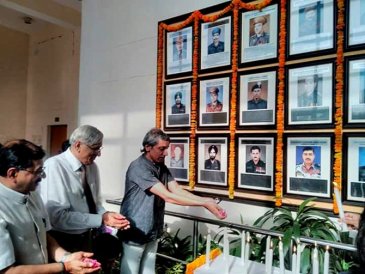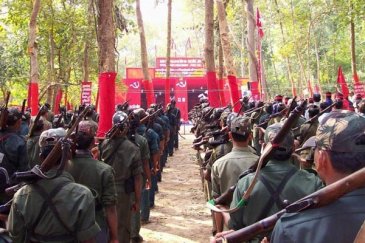By Swati Parashar
Do all states embrace militarism as a natural condition of their existence? Can militarism in different states be differentiated in content and form? How do states engender security through militarism? How is civilian consent built around militarism, especially in postcolonial states? In an era when populist regimes seem to dominate the political landscape and militarism has acquired new legitimacy and popular appeal, shaping public policy and everyday lived experiences, these questions beg further attention and research.
The unevenness of militarism can be gauged by its absence, its nominal presence, or its excessive occurrence.
In this article for the recently published special issue of Security Dialogue on militarism and security, I first question the ubiquitous deployment of ‘militarism’ in the singular which flattens out any differences in its manifestations across time and space. The unevenness of militarism can be gauged by its absence, its nominal presence, or its excessive occurrence. This variation in the understanding of militarism is necessary in order to understand the different trajectories of militarism both in Western and non-Western/postcolonial contexts.
I further unpack the relationship between militarism and the Indian state embedded in ‘postcolonial anxiety’. Sankaran Krishna (1999) refers to postcolonial anxiety as a persistent desire among Third World states to be considered equal to Western/European models of the enlightened liberal state. This anxiety leads to ‘mimetic constructions’ of the European/Western social order where ‘the story of what once happened in Europe constitutes the knowledge that empowers state elites as they attempt to fashion their nations in the image of what are considered successful nation-states’. Militarism follows the same story.

Vice Chancellor Professor Jagadesh Kumar, along with veterans from the armed forces, pays tribute after instilling the ‘Wall of Heroes’ for fallen soldiers at the Jawaharlal Nehru University campus in May 2017.
Although ‘postcolonial anxiety’ enables militarism at various levels of governance and state interventions in the everyday lives of the citizenry, in India it engenders militarism not in the immediate aftermath of independence from colonial rule, but as an anomaly since the end of the Cold War and the advent of globalization. The globalized world order of the 1990s and the move to democratize ‘security’ in discourse and practice, has led to what I call, ‘excessive militarism’ in India that thrives on the shared consensus between the state and citizens that security is a collective enterprise in which the material and affective labour of militarism must be performed by both sides.
‘Excessive militarism’ helps us understand both the historical evolution of the Indian state and its current obsession with formal military institutions and informal military culture. In recent times, we have witnessed large scale intolerance of any critique of the military and militaristic values which raise questions about the nation-state and its fragile sovereignty. Military culture is steadily making inroads into various aspects of civilian life, including celebration of cultural events and on university campuses. Humanising the soldiers is an important political and cultural project to inculcate military ethics and values among the civilian population.

The conflict between the Maoist insurgents and the Indian state is reflective of the security-development nexus and the excesses of militarism on both sides. Source: The India Today Group.
Moreover, the Indian state has adopted the ‘development’ narrative, presented as a quid pro quo arrangement between the state and the citizens where the latter are obliged to enable, approve and participate in the securing of the state as their primary duty, in return for development benefits. Security is presented as a precondition for implementing developmental assistance programmes, particularly in conflict-ridden areas. The Maoist conflict is a good example where ‘threat’ and ‘security’ is adopted by both the state and the Maoist insurgents, while citizens embrace military logics and military ethos, both to contest the state’s violence and to confer legitimacy on the state. In the existing perpetual state of (in)security and (under)development, militarism’s excesses become both the causes and the consequences of this conflict.
‘Excessive militarism’ helps us understand both the historical evolution of the Indian state and its current obsession with formal military institutions and informal military culture.
The article essentially highlights the gradual transformation of the postcolonial Indian state, from Gandhian ideals of nonviolence, promoting the idea of pluralistic India as a peaceful abode of the persecuted, to the realist ideals of survival though strong military measures. Militarism in India is not a direct response to exceptional circumstances or any singular catastrophic event (such as the attacks of 11 September 2001 in the USA), but a gradual yet steep militarization of all aspects of society, polity and structures of governance. This might be the case in other postcolonial states, which must be analysed in their various contexts.
I hope that the overall conclusion of the article inspires more conversations; how militarism opens up new spaces for understanding the complex state-building processes of postcolonial societies, the fraught and textured relationship between the state and citizens, and the constant tensions and negotiations between civilian lives and military culture.